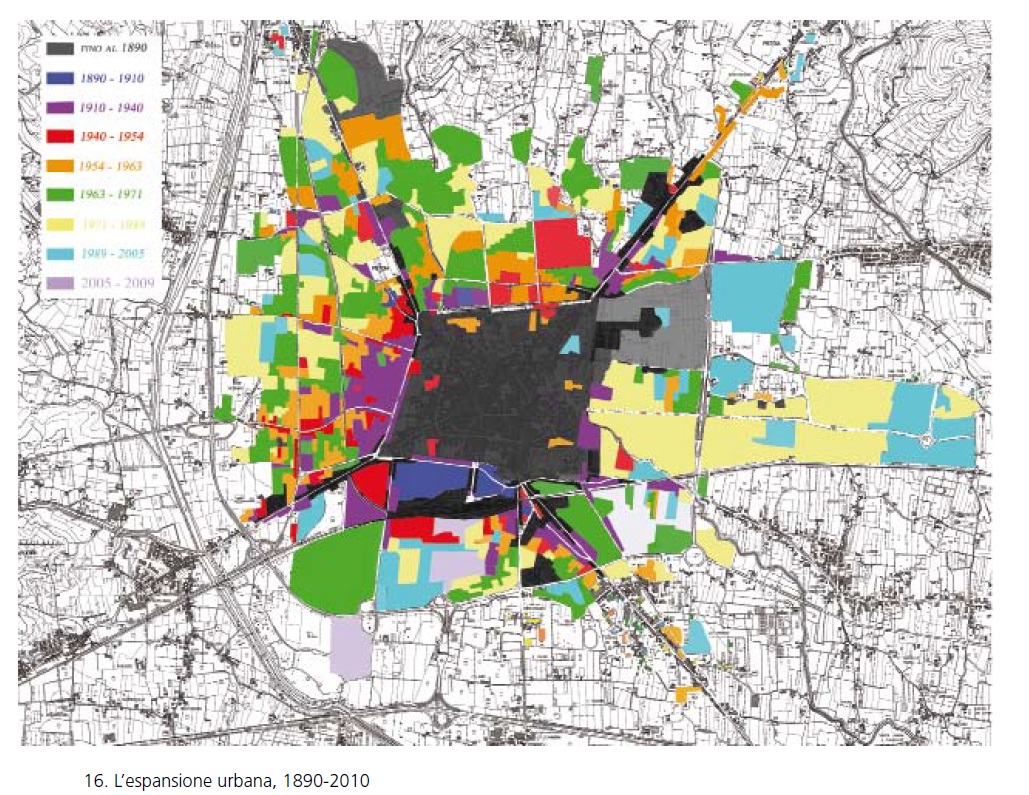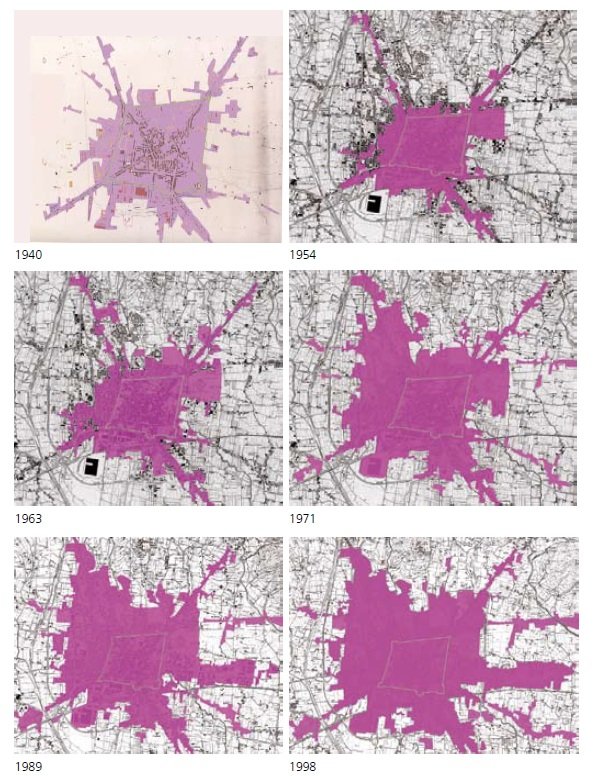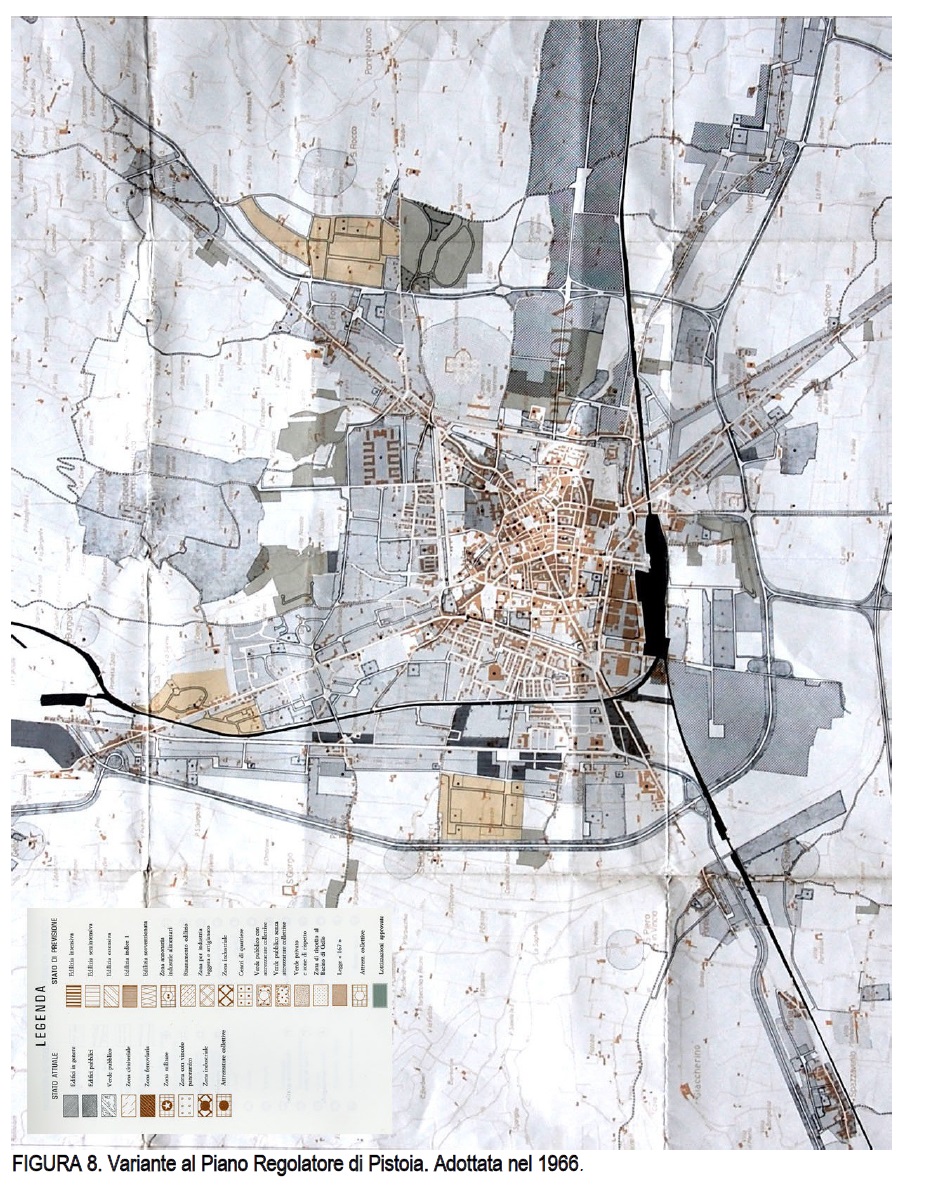City planning in Italy has largely failed. With some lucky exceptions, the city and land designing , started at nationalwide with the City Planning Law in 1942, has been frustrated by a structural bug in the relationship between City Planning and Public Administration. In this article we talk about that bug.
City planning is not a simple or intuitive discipline. However, its effectiveness - necessity, we could say - in the development of a territory is enormous.
Tomorrow's cities, with those technological infrastructures that we can only imagine today, will still need a careful design for large-medium areas (we talked briefly months ago with @voronoi about this, in his comments on city planning).

The growing of the italian city Pistoia.
But talking of the past and the present, City Planning, as it developed in Italy since the postwar period, has a background characteristic: It takes decades. A good Master Plan, implemented at best, begins to have effects on an area after at least a decade. The time of its implementation, in Italy in the second half of the twentieth century, is calculated in decades. This means that the government of the territory (we talk about Municipalities, since City Planning is largely entrusted to the municipalities) must have a firm and strong will in support of that Master Plan for at least 15-20 years. If you think of the dynamics of politics, even in Municipalities, in Italy, the "bug" I talked about sticks out. Politicians in Municipalities barely can look up to the of their mandate (and vuntil the law of May 25, 1993, No. 81 (direct election of the Mayor), the mandate of a City council was constantly at risk of mistrust and reshuffle). Even with a strong Mayor and with a certain consensus, the City Planning has hardly overcome the pressure on the succession of mayors, councilors, city councils.
It is a physiological bug, mind you: representative democracy requires a spare that can not be too dilated. And City planning is rarely a popular thing and easy to understand from which to obtain consensus. Votes, as you know, is best achieved by pandering tangible individual interests.
The result of all this has been, for most of the Italian municipalities, that City planning acts have been continually overturned, altered, renegotiated or simply ignored for 70 years. With the happy exceptions mentioned above.
My town, Pistoia, is not one of the happy exceptions. The maps below show the growing of the city over a century.
What is also evident to the profane eye is how, in the end, the city grew like simply filling the free areas around the historical nucleus, following market demand. That's like saying without any planning. (Not entirely, but now I'm not going in detail.)

Yet the Master plans were there. And also we had a continuity of political side in the Government of the Municipality. So what happened? Simply, we went on making exceptions, variations and infringements (then expunged by the various amnesties proclaimed by the National Government) to the approved Master Plans. The result is a urban fabric that we can only patch and wait for enough money to renew whole blocks (demolishing and rebuilding if needed).

The images in this post come from Giuliano Beneforti's books on History of Pistoia City Planning, which can be downloaded for free from the site (which I created) Urbanistica Pistoia.
Fantastic! When I fly over a city and see its whole organism, I always want to know every aspect of what brings it into being.
Downvoting a post can decrease pending rewards and make it less visible. Common reasons:
Submit